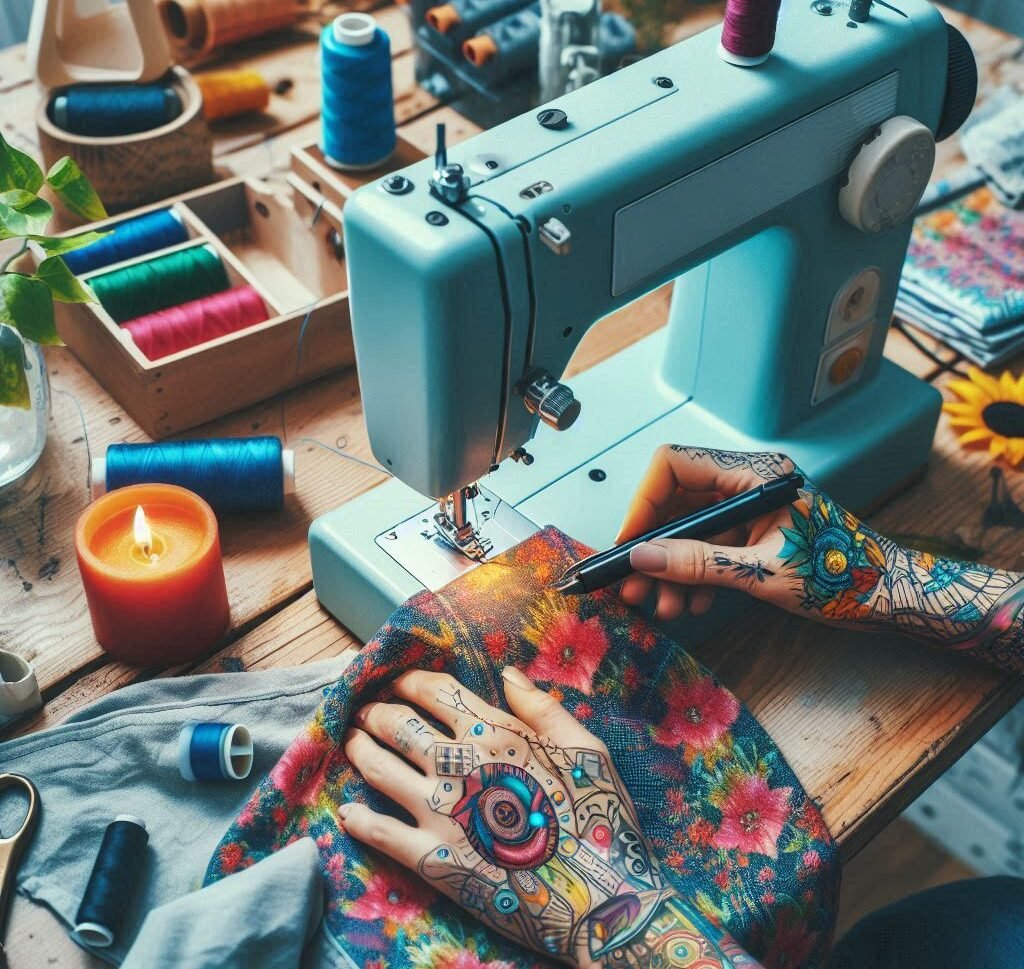In today’s fast-paced, throwaway culture, learning to mend and make your own clothes can be incredibly rewarding. Not only does it save money, but it also helps reduce waste and allows you to express your creativity. Plus, knowing how to use a sewing machine is a valuable skill that can open up a world of possibilities. Whether you’re a beginner or looking to refine your skills, this guide will walk you through the essentials of mending and making clothes and what to look for when purchasing a sewing machine.
As an Amazon Associate, we earn from qualifying purchases. This post contains affiliate links. Thank you for supporting BeamBound and helping us continue creating great content—at no extra cost to you!

Why Learn to Mend and Make Clothes?
Save Money: By repairing and creating your own clothing, you can significantly cut down on your wardrobe expenses.
Sustainability: Fast fashion contributes to massive waste and environmental damage. Mending and making your own clothes helps reduce this impact.
Personalization: Create unique, custom pieces that reflect your personal style. No more cookie-cutter outfits!
Skill Development: Sewing is a useful skill that can lead to other DIY projects and even potential business opportunities.

Getting Started with Mending
Mending your clothes is the first step towards self-sufficiency. Here are some basic techniques:
Simple Repairs: Start with easy fixes like sewing buttons, repairing seams, and patching holes. These basic repairs can extend the life of your clothes significantly.
Hand Stitching: Learn simple hand stitches like the running stitch, backstitch, and whipstitch. These are perfect for quick repairs and don’t require a sewing machine.
Patching: For larger holes, use fabric patches. You can either sew them on or use iron-on patches for a quick fix. This is also a great way to add a bit of flair to your clothes.
Making Your Own Clothes
Once you’re comfortable with mending, you can start making your own clothes. Here’s how to get started:
Choose Simple Patterns: Start with easy projects like skirts, simple tops, or pajamas. These require basic sewing skills and are great for beginners.
Select the Right Fabric: Different fabrics behave differently. Cotton is a good choice for beginners because it’s easy to handle and sew.
Take Measurements: Proper measurements are crucial. Use a measuring tape to get accurate measurements of your body to ensure your clothes fit well.
Cutting the Fabric: Use a good pair of fabric scissors. Cutting is a critical step, so take your time to get it right.
Sewing Basics: Familiarize yourself with basic sewing techniques like sewing straight lines, finishing seams, and adding hems. Practice these on scrap fabric before starting your project.
Using a Sewing Machine
A sewing machine can make your sewing projects faster and more professional-looking. Here’s what you need to know:
Basic Features: Look for a machine with essential features like adjustable stitch length and width, a variety of stitches, and an automatic needle threader.
Ease of Use: If you’re a beginner, choose a machine that’s easy to set up and use. Features like drop-in bobbins and clear threading guides can be very helpful.
Durability: A good sewing machine should be sturdy and able to handle different types of fabric. Check reviews and opt for a reputable brand.
Accessories: Many machines come with additional accessories like presser feet, bobbins, and needles. These can be useful for different types of sewing projects.
Maintenance: Regular cleaning and oiling are essential to keep your machine running smoothly. Follow the manufacturer’s instructions for maintenance.
Key Points When Purchasing a Sewing Machine
When buying a sewing machine, consider the following factors to ensure you get the best one for your needs:
Budget: Determine how much you’re willing to spend. Entry-level machines can be quite affordable, while more advanced models offer a range of features at a higher price.
Purpose: Consider what you’ll be using the machine for. If you’re planning to do heavy-duty sewing or quilting, you’ll need a more robust machine.
Features: Identify which features are most important to you. Common useful features include a variety of stitches, automatic buttonholes, and a free arm for sewing cuffs and sleeves.
Brand and Reviews: Research different brands and read customer reviews. Brands like Singer, Brother, and Janome are known for their quality machines.
Test Before You Buy: If possible, test the machine in-store. This will give you a feel for how it operates and whether it’s comfortable for you to use.
Warranty and Support: Ensure the machine comes with a good warranty and that customer support is available if you run into issues.
Conclusion
Becoming self-sufficient with your clothing needs through mending and making your own clothes is an empowering and fulfilling journey. By starting with simple repairs and progressing to creating your own garments, you can enjoy numerous benefits, from saving money to reducing your environmental impact. And with the right sewing machine, your projects will be easier and more enjoyable.
Whether you’re mending a beloved pair of jeans or creating a custom dress, the skills you develop will serve you well for years to come. So grab your sewing kit, choose a project, and start sewing your way to self-sufficiency!






